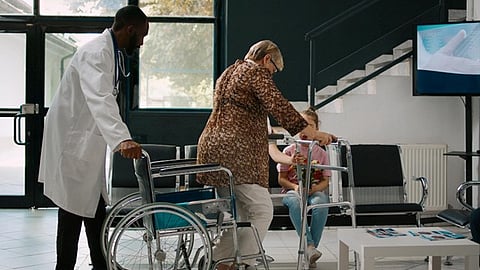Hospital Discharge to Skilled Nursing Facility: Steps for a Smooth Transfer
Leaving the hospital? Heading to a skilled nursing facility can feel like a huge step, not just for the patient, but for their whole family too. Moving things along smoothly means thinking ahead and talking openly. You'll consider health matters, your emotions, and the many logistical steps. Knowing what comes next takes away a lot of worry. It helps everyone have a much better time.
Assessing Patient Needs
Assessing the patient's medical and personal requirements before the hospital discharge to skilled nursing facility transfer is crucial. Your care team thoroughly checks a patient's health, rehab needs, and specific care notes. Finding the right skilled nursing facility begins with this assessment. Matching the facility’s capabilities with the patient’s needs ensures appropriate care and support.
Choosing the Right Facility
Picking the right place makes a huge difference in how quickly someone gets better and feels good. Families ought to weigh the location, services, staff skills, and patient comments. Actually seeing the places gives you a real feel for them. Seeing how staff behave and if the place is tidy really helps you decide what's best for the patient's specific wants.
Coordinating With Healthcare Providers
Effective communication between hospital staff and the chosen facility is essential. Think about it: doctors actually trade notes, including all your medical history and upcoming treatments. Providing the hospital with all the facts on a patient's current state and future medical needs ensures their care continues uninterrupted. When we join forces, you'll see fewer slip-ups and a much smoother change.
Preparing Essential Documentation
Gathering important documents is a key step in the transfer process. These typically include medical records, insurance information, and any legal documents like a power of attorney. Having these documents ready ensures a prompt admission process. Getting a clear picture of your bills and insurance keeps everything on track. You won't face frustrating mix-ups or wait times.
Managing Transportation Arrangements
Another important aspect is organizing safe and comfortable transportation. Depending on the patient’s condition, an ambulance or specialized transport service may be necessary. Please ensure the transport crew is informed of any medical needs for the trip. Imagine arriving at your new facility and feeling completely at ease. That's the peace of mind our careful planning brings.
Informing and Involving Family Members
Keeping family members informed throughout the transfer process is essential. Beyond just treatment, they're there to lift spirits, offer a kind word, and genuinely make each patient feel safe and cared for. Sharing news often and talking things through helps loved ones stay connected and feel more at ease. Your participation often means everything turns out great, giving everyone a much nicer time.
Planning for Personal Comfort
Personal belongings can provide comfort and familiarity in a new environment. Encouraging patients to bring items like photos, favorite blankets, or books can ease the transition. Your own familiar things can transform a nursing facility into a place that truly feels like home, full of comfort. Patients feel far more at ease and pleased with their care when you genuinely consider their specific wants and needs.
Setting Expectations With Facility Staff
Clear communication with the facility’s staff about expectations and care plans is vital. Discussing the patient’s daily routine, dietary preferences, and any special needs ensures personalized care. Because of these talks, you'll find staff giving steady, thoughtful support. When you really click with caregivers, a strong sense of trust takes root. This feeling makes the whole situation much more pleasant for everyone.
Monitoring the Adjustment Period
After the transfer, monitor the patient’s adjustment. Regular check-ins by family and healthcare providers can assess the patient’s comfort and satisfaction. Addressing any concerns promptly helps the patient adapt to the new environment. Giving patients emotional help really matters. It often helps them become better much faster.
Evaluating Progress and Care
Ongoing evaluation of the patient’s progress and the care provided is essential. We regularly chat with the facility team about the patient's health. We discuss their well-being and update their care plan as needed. When you stay on top of things and act quickly, patients always get the right care and help from start to finish.
Conclusion
For a smooth move from the hospital to a nursing facility, you must plan well and talk openly. A good change happens when families and medical staff consider health matters, how to get around, and what people are feeling. Imagine patients feeling better, and everyone involved having a much smoother time. That's the power of these guidelines.
Inspired by what you read?
Get more stories like this—plus exclusive guides and resident recommendations—delivered to your inbox. Subscribe to our exclusive newsletter
Resident may include affiliate links or sponsored content in our features. These partnerships support our publication and allow us to continue sharing stories and recommendations with our readers.

